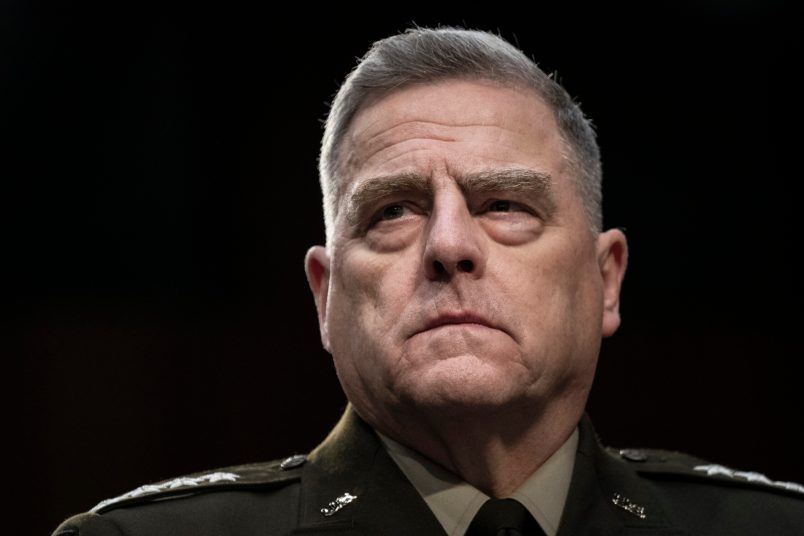Joint Chiefs of Staff Chairman Gen. Mark Milley testified before the Senate Armed Services Committee on Thursday, giving his first detailed, public remarks after reporting emerged that he may have stepped outside the chain of command during the dangerous final months of the Trump administration.
In the book Peril, Washington Post reporters Bob Woodward and Robert Costa wrote that Milley engaged in discussions with his Chinese military counterpart to defuse concerns in Beijing that Trump would order an attack, and said after Jan. 6 that he would be “involved” in any nuclear launch decision.
Milley furiously denied that he broke the chain of command, and offered senators context and an account of his activities.
Below are key takeaways from Milley’s testimony on Tuesday:
Trump may have been out of the loop
Milley was circumspect in his language throughout the hearing.
Notably, when speaking about his own actions towards China, Milley did not say that he was acting on orders from Trump, but rather on an understanding of Trump’s “intent.”
Separately, Milley confirmed who he briefed about his meetings with his Chinese counterpart, and from whom he received orders to hold the conversation: the secretary of defense on orders, while briefing both the Pentagon and former Secretary of State Mike Pompeo.
That leaves it unclear whether Trump himself was “read in” on the phone calls.
“If there was going to be an attack, there would be plenty of communications before,” Milley said of his conversations with the Chinese general, before adding of Trump: “I was being faithful to his intent.”
Did Woodward get the full context right?
When write-ups of Peril first began to be published, it was clear that the allegations around Milley stepping outside the chain of command were serious.
But were they true? Or, rather, did reporting in the book fully capture what was meant?
Milley suggested that, perhaps, it did not.
Take reporting in Peril that Milley demanded to be “involved” in any nuclear launch decision. That seemed like a clear step outside of the chain of command, given that the chairman of the Joint Chiefs of Staff has an advisory, and not command, role.
In a memo submitted to the committee and in his verbal testimony, Milley averred that he wanted to be involved in the “chain of communications, not the chain of command.”
That had to do in part, Milley said, with a procedural requirement that he participate in a “decision conference” to authenticate any nuclear launch order from the sitting president.
There may have been a scarier China situation brewing than we understood at the time
This was a thread which emerged during the hearing as mysterious as it was potentially terrifying.
Milley held the two calls with his Chinese counterpart on Oct. 30 and Jan. 8, in what he characterized as a response to mounting intelligence that Beijing feared a U.S. attack.
“I was communicating to my Chinese counterpart — on instructions, by the way — to de-escalate the situation, and I told him we were not going to attack,” Milley said.
It’s not clear why Beijing may have believed that an an attack might be forthcoming. But Milley provided the panel with a timeline of his interactions with the Chinese military that included the relevant context for the Department of Defense.
Part of that included August 2020 intelligence that Chinese scholars and officials were concerned that “the Trump administration would provoke a conflict with [China] to win the November election.”
That led to the Chinese military going on alert — a status that did not end until Jan. 30, 2021.






